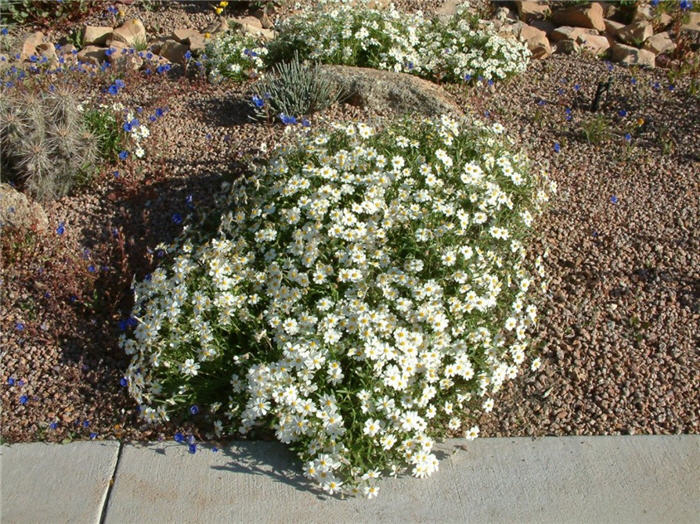| Botanical Name: Melampodium leucanthum | |
| Common Name: Black foot Daisy |

-
Anatomy
-
Culture
-
Design
Plant Type
Perennial
Height Range
Under 1'
Flower Color
White
Flower Season
Summer
Leaf Color
Grey Green
Bark Color
n/a
Fruit Color
n/a
Fruit Season
n/a
Sun
Full
Water
Very Low, Low
Growth Rate
Fast, Moderate
Soil Type
Sandy, Clay, Rocky
Soil Condition
Average, Poor, Well-drained, Dry
Soil pH
Neutral, Basic
Adverse Factors
n/a
Design Styles
English Cottage, Meadow, Mediterranean, Ranch, Spanish
Accenting Features
Fragrance, Showy Flowers
Seasonal Interest
Spring, Summer
Location Uses
Perennial Border, Parking Strip, Patio, Raised Planter, With Rocks
Special Uses
Small Spaces
Attracts Wildlife
Butterflies
Information by: Stephanie Duer
Photographer: Mountain States Nursery
Photographer: Mountain States Nursery
-
Description
-
Notes
Black foot daisy is a rugged, heat and drought tolerant plant. In the summer, white, honey-scented daisies with yellow centers cover mounds of grey foliage. Grows about 10 to 12 inches tall and twice as wide.
Grow in full sun and well drained soil. Thrives in lean, well-drained soils. One source listed it as a Zone 7 plant, but High Country Gardens has it as a Zone 5, and they introduced the plant to the trade so they probably know.